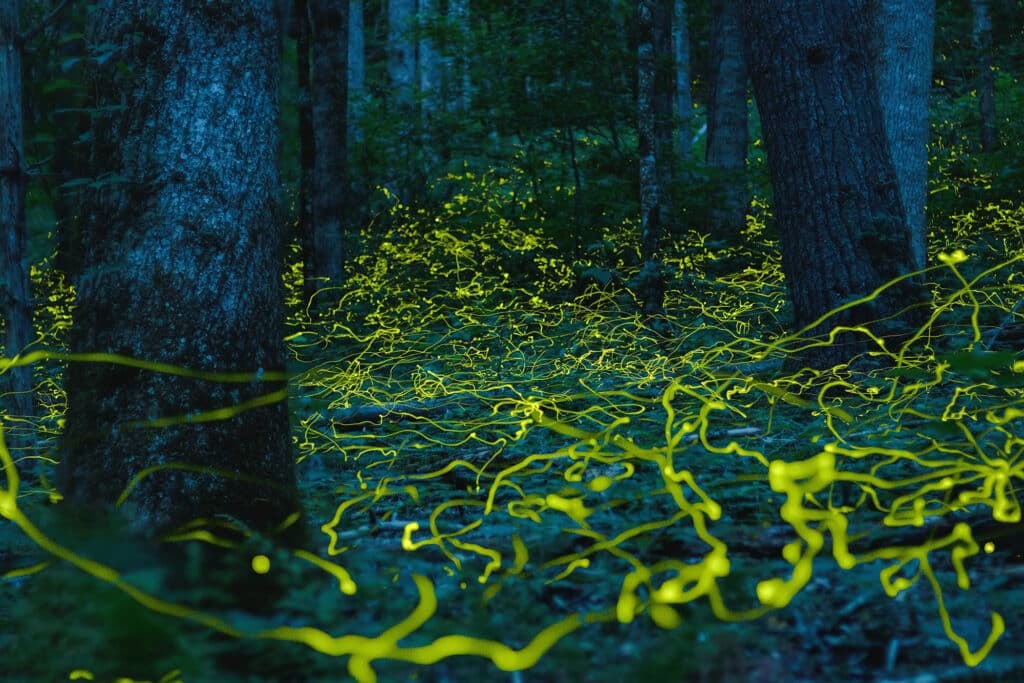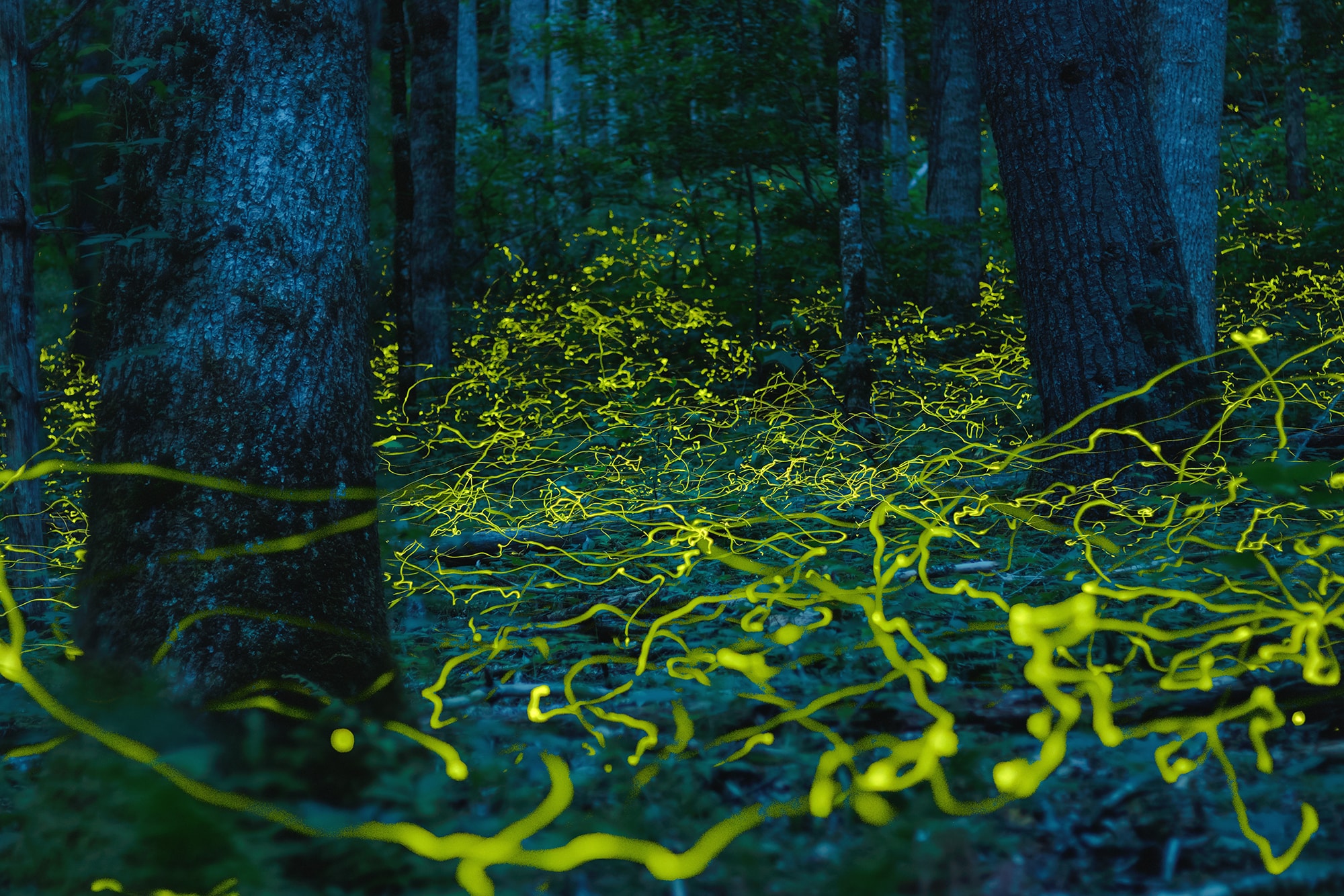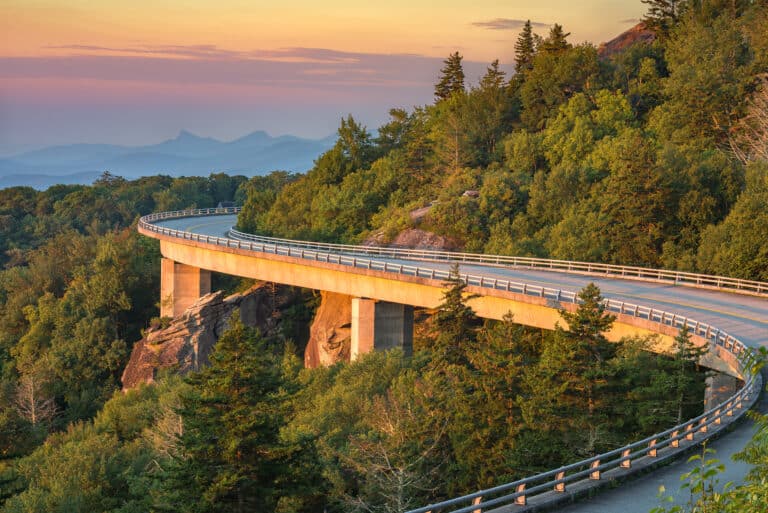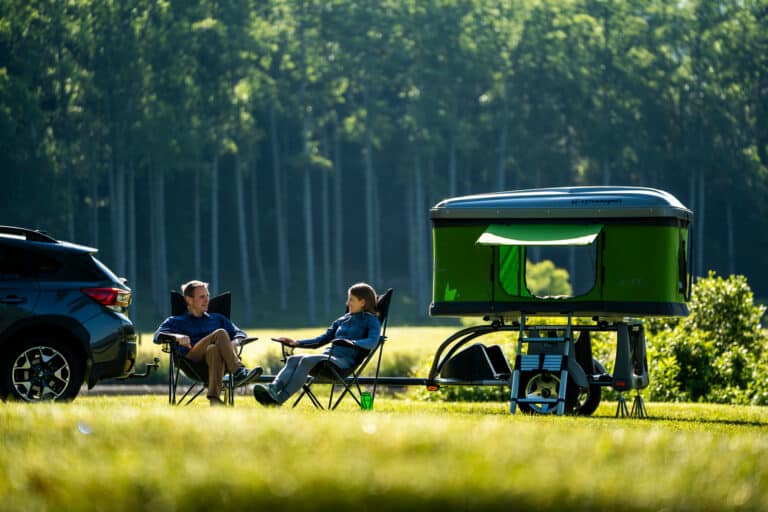Now is the time to look for these unique fireflies in Southern Appalachia
I was there when the bioluminescent forest awakened, and I’ll never forget it. In May 2019, I was getting into nighttime photography, mainly starscapes and firefly fields. I’d heard about the dazzling synchronous fireflies in Great Smoky Mountains National Park, and my research led me to a quiet cove far from the crowds of Elkmont. I set up my camera, tripod, and remote shutter, then carefully picked my way along a broad streamside trail as full night descended.
Instead of synchronous fireflies, I was baffled to see tiny azure lights ignite on the dark forest floor and slowly take to the air, like something out of a dream. Just a foot or two off the ground, the glowing orbs crossed around, over, and under each other in a charismatic dance of zigzags, bobs, and whirligigs. The source of this spectacle was a tiny species of firefly, only seen by those who wander the woods at night.
Blue ghosts inhabit pristine forests far from human light in the mountains and foothills of North Carolina and Tennessee and parts of South Carolina, Texas, and Oklahoma. Though upstaged by the better-known synchronous fireflies, they perform their own magical show in the early firefly season.
Male blue ghosts don’t flash their lights. Instead, they glow for up to a minute at a time with an eerie bluish-green color, like tiny nighttime travelers swinging their lamps through the dark understory. Flightless, grub-like females, smaller than a grain of rice, glow with the same light on the ground or low understory, awaiting their suitors.
“Everyone grows up thinking fireflies flash, flash, flash, and these are totally different,” says Becky Nichols, entomologist for Great Smoky Mountains National Park. “The fact that they fly around with a glowing little searchlight, that’s the most distinctive thing about them. There are 19 known species of firefly in this park, and blue ghosts are by far the most unique.”
On that cool night in May, as I watched their courtship dance in the inky blackness, I felt a loss of depth perception that gave the impression of a two-dimensional cosmos brought down to Earth. Thousands of males filled the forest and descended its slopes like a procession of blue candles. I’ve never seen so many fireflies before or since, and the experience carried a sense of the sacred.
“It’s not just the lights; it’s the silence, this combination of making light in the darkness and doing it silently,” says Sara Lewis, professor emerita of biology at Tufts University and author of the book “Silent Sparks: The Wondrous World of Fireflies.” “Across all cultures, all around the world, fireflies are kind of a revered insect. They’re still very mysterious to people and mysterious to science. There’s still so much that we don’t know about fireflies in general.”
In the field guide “Fireflies, Glow-worms, and Lightning Bugs,” global firefly authority Lynn Faust describes a dual peak of blue ghost activity in Southern Appalachia, one from April to late May and another in mid-June in the valleys. At higher elevations, these peaks shift to late May and late June.
If you want to see blue ghosts, several paid tours are available, like those offered by the Cradle of Forestry and Asheville Hiking Tours. But half the thrill is in the chase, so here are a few tips for finding blue ghosts yourself.
- Wait for a night with little or no moon that falls within the typical peak season. Adults begin emerging at around 340 modified growing degree days. They are more tolerant of lower air temperatures than other fireflies, but the show will stop below 50°F.
- Light rain isn’t a problem, but heavy rain will force them to take cover.
- The forest must be healthy with thick leaf litter. This is necessary for larvae to survive.
- They only appear at very late twilight or full dark, so have patience. If it’s fully dark and you don’t see them, the conditions might not be right, or the spot might just be a dud. It can be a roll of the dice, but getting outside at night is its own reward.
- They have been known to glow all night, but peak activity occurs for about the first 90 minutes from 9:30-11 p.m.

Help Protect Fireflies
Use as little light as possible to avoid disturbing the fireflies. If you must use a flashlight or headlamp, make sure to use one with a red filter.
• Don’t try to catch them. You risk trampling the females or twisting an ankle. Stay on the trail and away from their display areas.
• You can help support fireflies and their habitat through advocacy organizations like the Xerces Society for Invertebrate Conservation, Fireflyers International Network, and Firefly.org.
Cover Photo by author Tim Reaves








